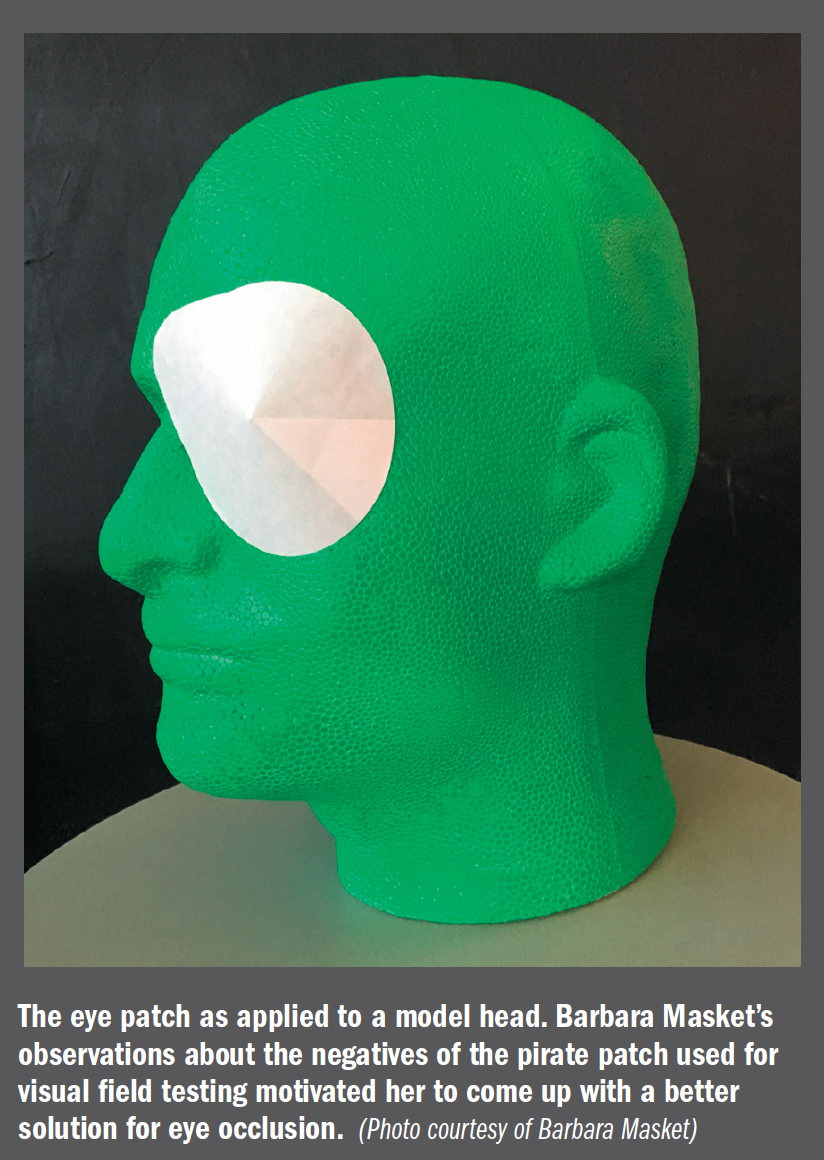Article
Disposable eye patch fills niche for improved occlusion option
Author(s):

The disposable, self-adherent eye patch was designed to be translucent and have an adjustable vault to accommodate individual anatomy, as well as be easy for technicians to use.
A disposable and adjustable eye patch (MASK-it Eye Patch) is a novel alternative to traditional modalities for monocular occlusion that offers advantages for both patients and practices, said office administrator Barbara Masket.
“The disposable eye patch is hygienic, adjustable, and easy to use,” said Masket, who designed the patch. “It provides patients with a cleaner and more comfortable covering than the reusable, and dreaded ‘pirate patch’ and it saves time spent by technicians between patients and fellow eye exams.”
Masket works at Advanced Vision Care, Los Angeles, where she is involved in evaluating technicians’ skills in performing visual field testing. Her observations about the negatives of the pirate patch used for visual field testing motivated her to come up with a better solution for eye occlusion.
Finding better solution
“Typically, the pirate patch is cleaned with alcohol pads before each use, but that introduces cost, adds time to the procedure, and does not eliminate risk for infection transmission,” Masket explained.
“Moreover, eye pads or tissues are applied to the closed eye, under the pirate patch, inducing dark adaptation and compressing the globe, potentially disturbing the ocular surface,” she added.
There is a waiting period to allow the fellow eye to recover from dark adaptation and to allow the ocular surface to re¬cover and to remove any loose eyelashes.
Loosening of lashes is a common problem because many patients doing the visual field testing have glaucoma and are using prostaglandin analogue medications that promote eyelash growth. Furthermore, patients complain that the strap of the pirate patch disturbs their hair and facial make-up.
As she began to develop the concept for a new patch, it became apparent that the product would need to be translucent to prevent dark adaptation, self-adherent, have an adjustable vault to accommodate individual anatomy, and be easy for technicians to use. She envisioned that the product would be faster, cleaner, better and less costly than the traditional pirate patch.
Applying the patch
The patch replicates the contour of an eyeshield. A partial slit bisecting the larger portion allows the patch to be fashioned into a cone of variable depth and results in a covering that fits all orbital configurations without compressing the lids or lashes.
The disposable eye patch is applied to the face by positioning the tapered portion over the bridge of the nose at the level of the eyebrows and pressing lightly around the circumference.
After the procedure for the first eye is completed, the patch is easily removed and can be placed over the fellow eye. Generally, the patch will adhere properly when reused in this manner, unless a patient has particularly oily skin, Masket said.
In addition to its use as an eye covering for visual field testing, the patch can be used in other applications, such as to occlude the fellow eye in patients undergoing LASIK.
The patches come on a roll in a box that contains 500 units, and like stickers, are simply peeled away from the backing paper.
Disclosures:
Barbara Masket
e: maskitpatch@gmail.com
The disposable eye patch is available at www.MASK-it-EyePatch.com. The eye patch is trademarked and patent pending. As owner, Barbara Masket has a direct financial interest.
Newsletter
Don’t miss out—get Ophthalmology Times updates on the latest clinical advancements and expert interviews, straight to your inbox.





